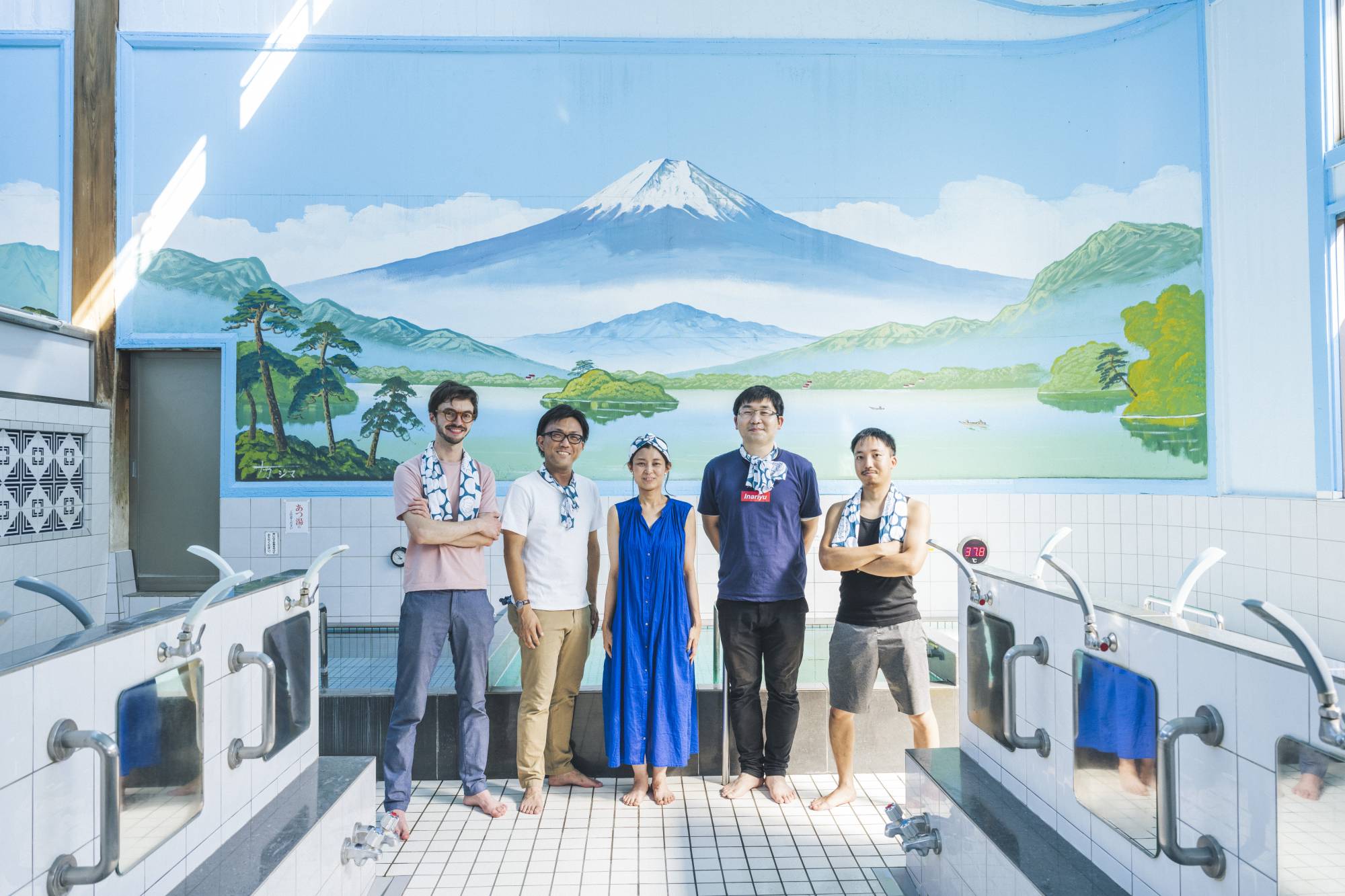Dozens of elderly regulars, families with children and young Tokyoites from all over the city strip, shower off and soak.
This was the scene during a scorching weekend in July at Inari-yu, a rejuvenated sentō (public bathhouse) in Kita Ward’s Takinogawa neighborhood. Together in baths ranging from warm to very hot, bathers admired the bright blues and greens of a recently repainted mural of Mount Fuji over their heads.
Built in 1930, Inari-yu is a rare surviving example of the shrine-like miyazukuri architectural style typical of Tokyo’s prewar bathhouses. The main attraction for visitors, though, was the reopening of the century-old nagaya, a type of Edo Period (1603-1867) rowhouse, adjacent to the sentō. Inari-yu’s staff originally lived in this building, but it had been abandoned for decades — until three years ago, when Sento & Neighborhood, a nonprofit that aims to revive historic bathhouses, started working with Inari-yu’s fifth-generation owners to restore the nagaya.


















With your current subscription plan you can comment on stories. However, before writing your first comment, please create a display name in the Profile section of your subscriber account page.